#1996
Junkyard Find: 1996 Saturn SC2
The Saturn Division spent the first half of the 1990s printing money for The General with its no-haggle pricing policy and plastic-bodied cars that only rusted in areas you couldn't see easily, and all those cars were based on a single platform: the S Series. Today's Junkyard Find is an example of the sporty coupe version of the first-generation Saturn S, found in a Denver-area boneyard recently.
Junkyard Find: 1996 Toyota Camry Wagon
Toyota sold new Camry station wagons in North America from the 1987 through 1996 model years. I've found a couple of examples of the first-year longroof Camry during my junkyard travels, but the final-year cars remained elusive… until I spotted this one in a Silicon Valley car graveyard in April.
Junkyard Find: 1996 Oldsmobile Cutlass Supreme SL Sedan
From the 1966 through 1997 model years, American car shoppers could walk into an Oldsmobile dealership and drive out in a new Cutlass Supreme. During its peak sales years of the middle 1970s through the middle 1980s, the Cutlass Supreme reigned as one of the best-selling cars in the land. Today's Junkyard Find, found in a Denver-area car graveyard, comes from the often-overlooked twilight years of Cutlass Supreme production.
Junkyard Find: 1996 Buick LeSabre Wildcat Edition
During the bling-and-horsepower-crazed 1960s, The General’s Buick Division took the full-size B-Body platform, added a hot engine and flashy trim, and called it the Wildcat. Not many well-heeled grandfathers felt interested in doing land-yacht burnouts in the VFW parking lot, it turned out, so Wildcat sales ended after 1970… but a yearning for the glory days of the Wildcat must have inspired some Buick dealers to create their own Wildcats during the 1990s. Here’s one of those rare special-edition cars, found in a Denver-area self-service yard.
Junkyard Find: 1996 Subaru SVX
One great thing about living in Colorado, where new residents are issued a dog and a Subaru when they arrive, is that I can find examples of just about every Subaru model sold here since the late 1970s in the local car graveyards. That means that I have plenty of opportunities to observe the gloriously weird SVX, once its street days are finished.
Junkyard Find: 1996 Mercedes-Benz SL 320
Junkyard Find: 1996 Saturn SW1 Wagon With Manual Transmission
We’ve had back-to-back oddball three-pedal cars in this series ( a Suzuki Forenza and non-SHO Taurus), so let’s make it three weeks in a row with today’s Junkyard Find! Saturn S Series cars were always cheaper with manual transmissions, but nearly every Saturn wagon shopper insisted on an automatic. I knew I’d find a manual Saturn SW if I kept searching junkyards, though, and here it is: a low-end ’96 with single-cam engine, Ignore Me Silver paint, and a 5-on-the-floor manual.
Junkyard Find: 1996 Isuzu Hombre
Some of the most interesting examples of GM badge engineering during the last few decades involved the Isuzu brand; first, the Chevrolet LUV pickup ( Isuzu Faster) arrived during the late 1970s, followed by the Chevrolet/Geo Spectrum ( Isuzu Gemini) and Geo Storm (Isuzu Impulse), and finally the Trailblazer-based Isuzu Ascender. Mixed in there was the Isuzu-ized second-gen Chevy S-10, also known as the Hombre.
You won’t find many Hombres in your local wrecking yard, but I kept my eyes open for one until this ’96 showed up in Denver.
Junkyard Find: 1996 BMW 318ti California Edition
Junkyard Find: 1996 Chevrolet Beretta Z26
The Chevrolet Beretta and its sedan sibling, the Chevrolet Corsica, were built for the 1987 through 1996 model years. Today, both models are nearly as forgotten as the wretched Celebrity, though you’ll still see the occasional example on the street today (usually sporting at least one space-saver spare tire).
Here’s a last-year-of-production Beretta — outfitted with the high-performance Z26 package — spotted in a Phoenix yard a few months back.
Junkyard Find: 1996 BMW 328i Convertible
Junkyard Find: 1996 Isuzu Oasis
One of the best things about haunting high-inventory-turnover self-service junkyards is finding really rare vehicles. Sometimes those ultra-rare machines are ancient European cars nobody remembers, sometimes they are commonplace cars with options nobody ordered, and sometimes they are obscure imported minivans that disappeared without a trace.
Today’s Junkyard Find is the third type, with a bewildering badge-engineering subplot that made sense to about a half-dozen suits in Japan.
Junkyard Find: 1996 Nissan Maxima GXE, With Five-Speed
The Maxima has been with us since the 1981 Datsun 810 Maxima, which became the Datsun Maxima, then the Datsun Maxima by Nissan, and finally the Nissan Maxima.
Starting out as a Z-car-based sporty sedan, it grew into an electronic-gadget-packed luxury sedan, then became bigger, more powerful, and less crazy with each successive generation until we arrived at the current competent-but-not-particularly-exciting Maxima.
The fifth-generation Maxima, made for the 1994 through 1999 model years, seems to be the last for which the manual-transmission option was selected by a significant minority of buyers; you could get one after 1999, but I never see anything but automatics in my junkyard travels.
Here’s a mean-looking ’96 that I spotted in a San Francisco Bay Area wrecking yard.
Junkyard Find: 1996 Chevrolet Caprice Classic, Rabid 49ers Fan Edition
Like art cars, vehicles that have been turned into team-color-painted, sticker-bedecked sports-team fanmobiles tend to spend their lives just one minor mechanical problem away from that final tow-truck ride. This “whale” Caprice was, we can assume, the life of the tailgate party at freezing-ass Candlestick Park and maybe that new stadium that’s nowhere near San Francisco.
Junkyard Find: 1996 Buick Regal Olympic Edition
Buick sold some special-edition Centuries as part of their sponsorship deal with the 1984 US Olympic athletes, and we saw one of these cars in this series last year. The later Olympic Edition Buicks are harder to find; there are still some ’88s around, but this is the first ’96 I can recall seeing anywhere. Let us admire its athletic grace.



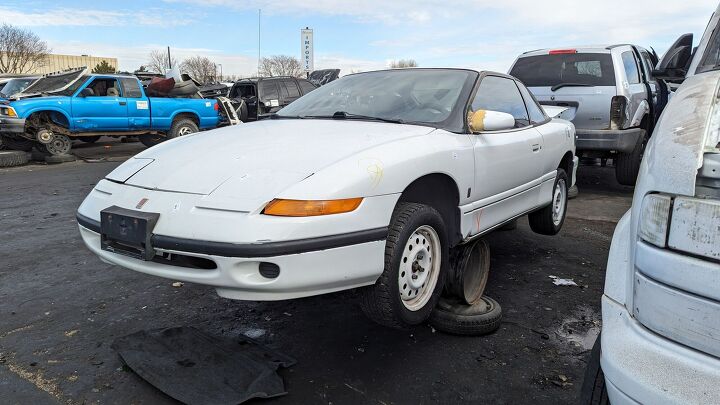
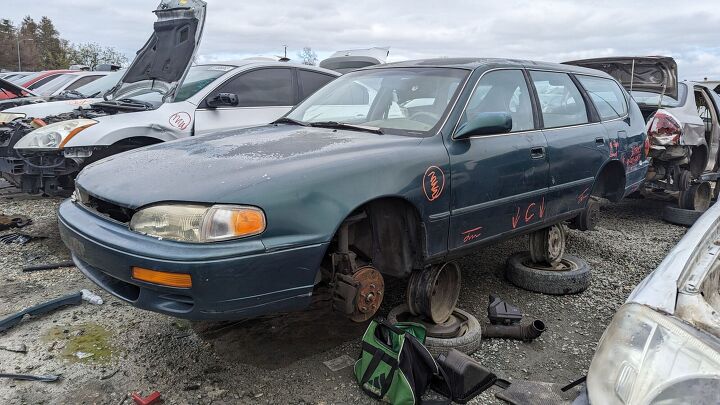
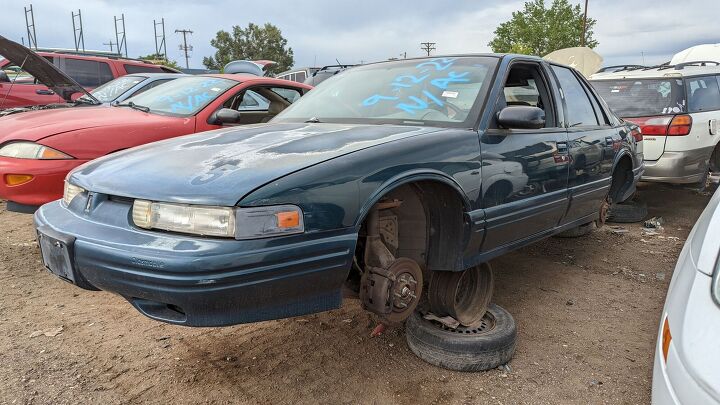
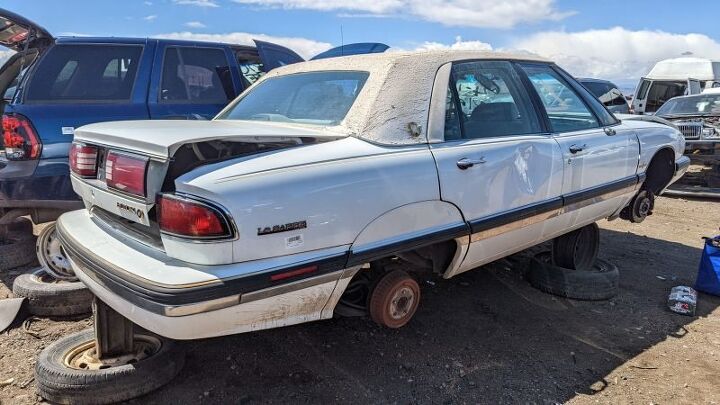
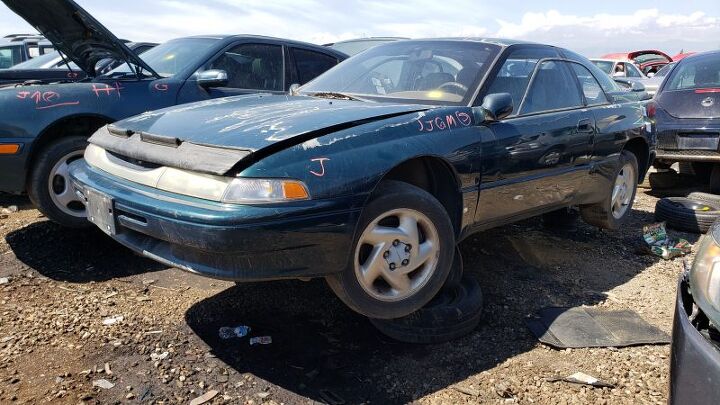
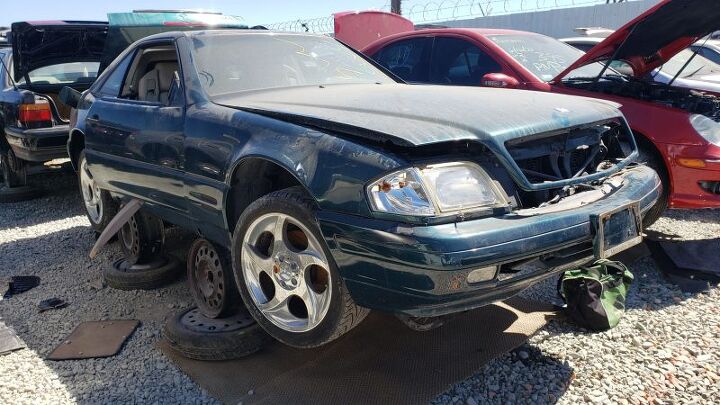
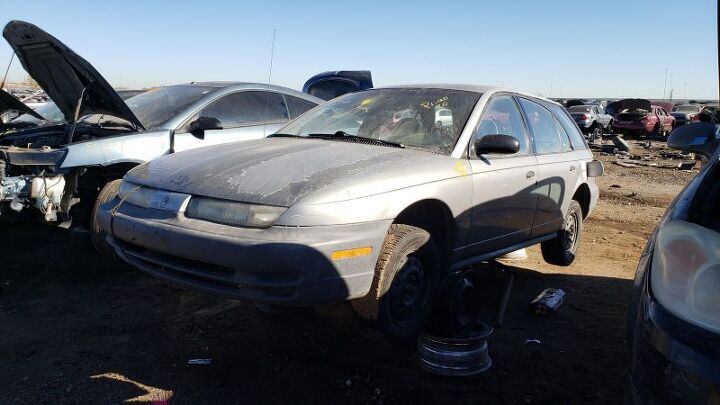
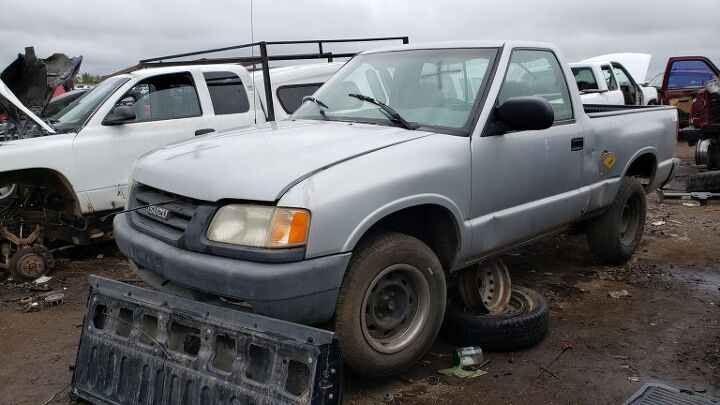

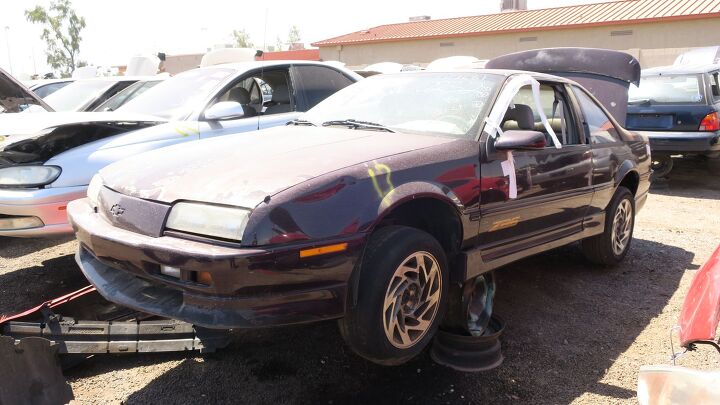
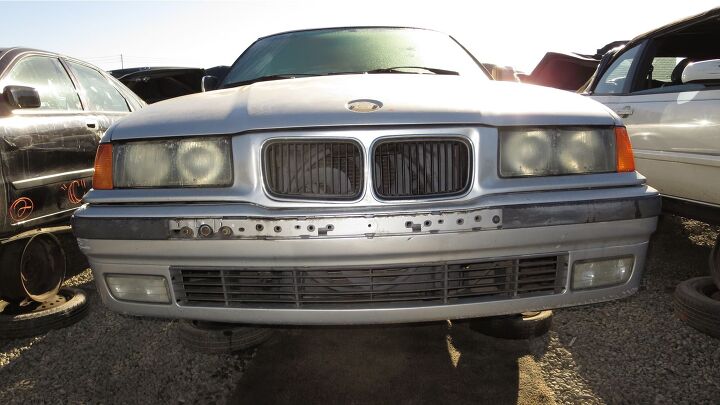

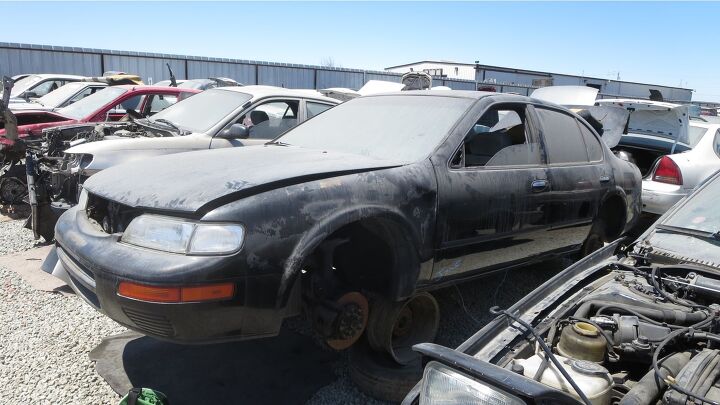














Recent Comments